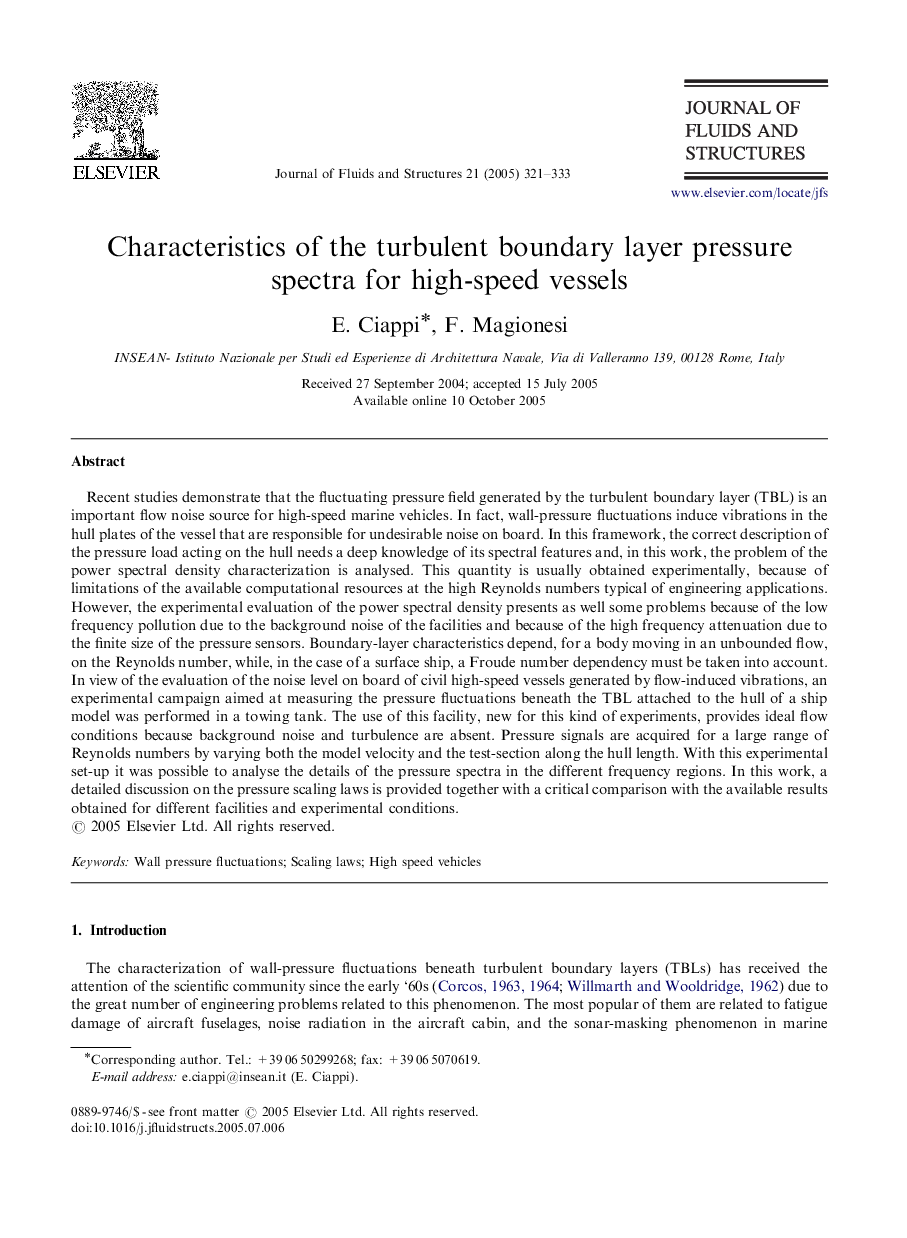| Article ID | Journal | Published Year | Pages | File Type |
|---|---|---|---|---|
| 10416514 | Journal of Fluids and Structures | 2005 | 13 Pages |
Abstract
Recent studies demonstrate that the fluctuating pressure field generated by the turbulent boundary layer (TBL) is an important flow noise source for high-speed marine vehicles. In fact, wall-pressure fluctuations induce vibrations in the hull plates of the vessel that are responsible for undesirable noise on board. In this framework, the correct description of the pressure load acting on the hull needs a deep knowledge of its spectral features and, in this work, the problem of the power spectral density characterization is analysed. This quantity is usually obtained experimentally, because of limitations of the available computational resources at the high Reynolds numbers typical of engineering applications. However, the experimental evaluation of the power spectral density presents as well some problems because of the low frequency pollution due to the background noise of the facilities and because of the high frequency attenuation due to the finite size of the pressure sensors. Boundary-layer characteristics depend, for a body moving in an unbounded flow, on the Reynolds number, while, in the case of a surface ship, a Froude number dependency must be taken into account. In view of the evaluation of the noise level on board of civil high-speed vessels generated by flow-induced vibrations, an experimental campaign aimed at measuring the pressure fluctuations beneath the TBL attached to the hull of a ship model was performed in a towing tank. The use of this facility, new for this kind of experiments, provides ideal flow conditions because background noise and turbulence are absent. Pressure signals are acquired for a large range of Reynolds numbers by varying both the model velocity and the test-section along the hull length. With this experimental set-up it was possible to analyse the details of the pressure spectra in the different frequency regions. In this work, a detailed discussion on the pressure scaling laws is provided together with a critical comparison with the available results obtained for different facilities and experimental conditions.
Related Topics
Physical Sciences and Engineering
Engineering
Mechanical Engineering
Authors
E. Ciappi, F. Magionesi,
